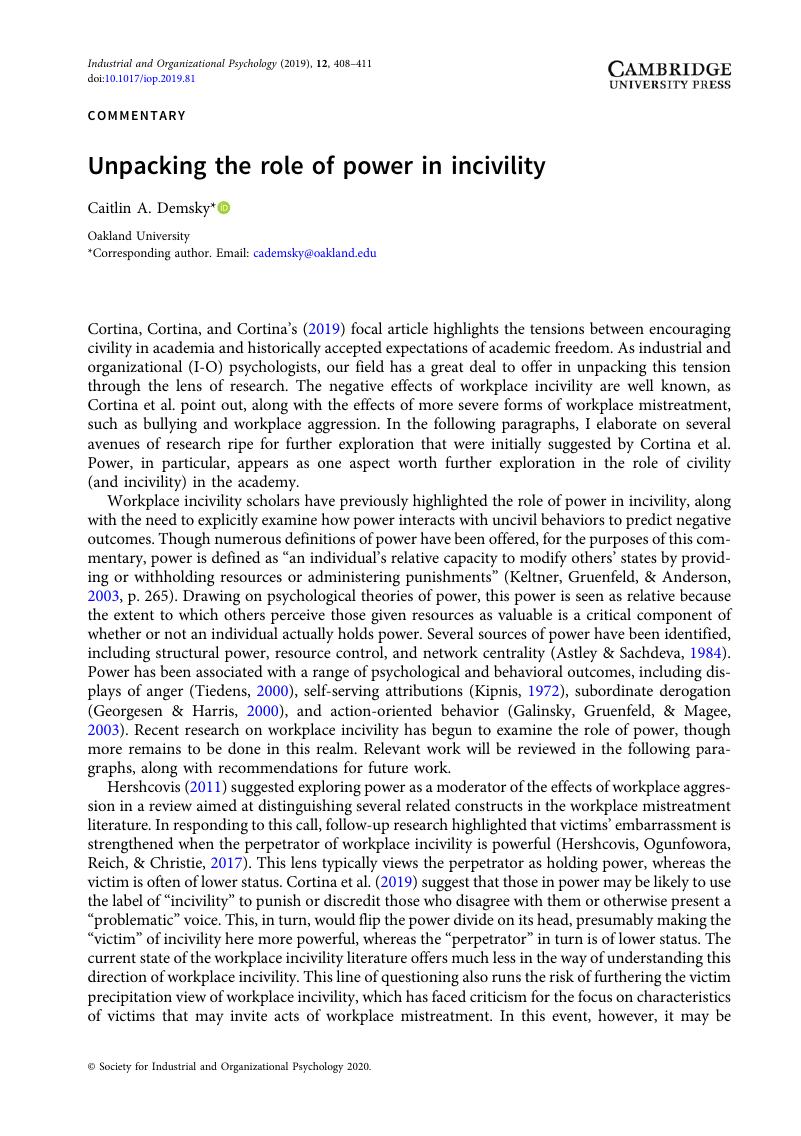Crossref Citations
This article has been cited by the following publications. This list is generated based on data provided by Crossref.
Osgood, Jeffrey M.
Yates, Hunter K.
Adler, Amy B.
Dyches, Karmon D.
and
Quartana, Phillip J.
2021.
Tired and angry: Sleep, mental health, and workplace relational aggression.
Military Psychology,
Vol. 33,
Issue. 2,
p.
80.
Nielsen, Morten Birkeland
Finne, Live Bakke
Parveen, Sana
and
Einarsen, Ståle Valvatne
2022.
Assessing Workplace Bullying and Its Outcomes: The Paradoxical Role of Perceived Power Imbalance Between Target and Perpetrator.
Frontiers in Psychology,
Vol. 13,
Issue. ,
Ensari, Nurcan
Schlaerth, Andrea
and
Camden-Anders, Sherry
2023.
Encyclopedia of Mental Health.
p.
466.





